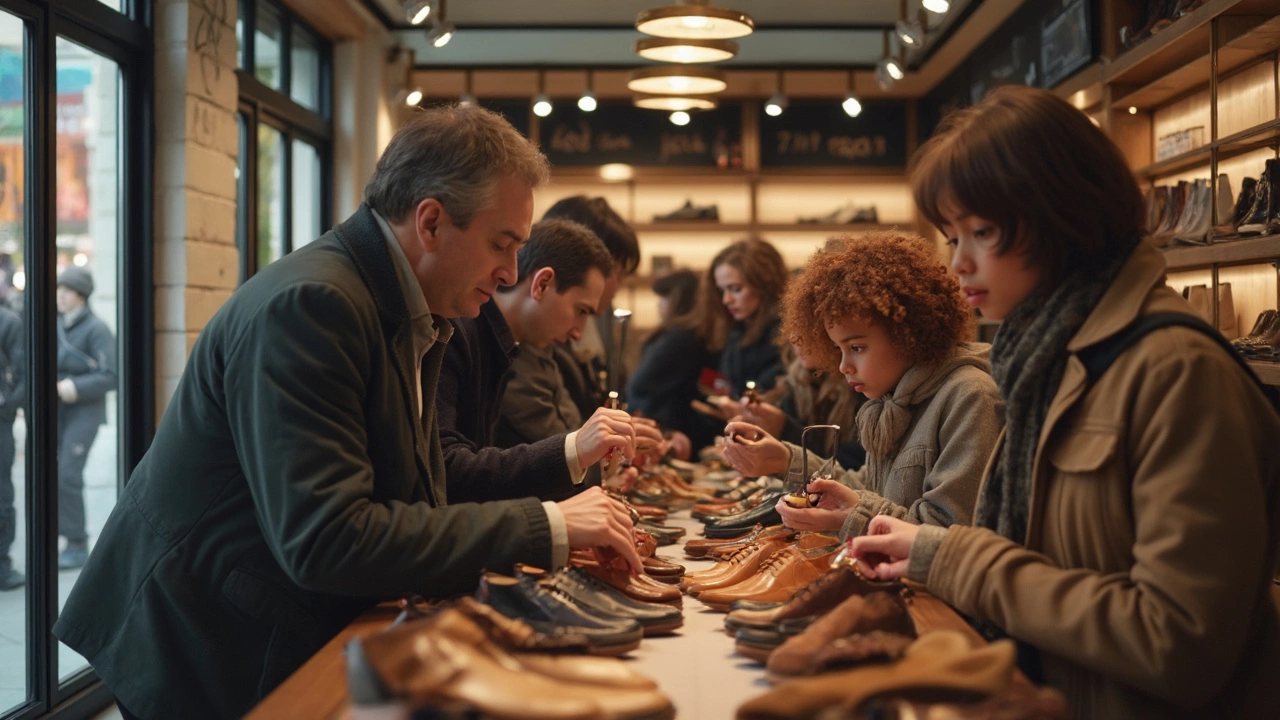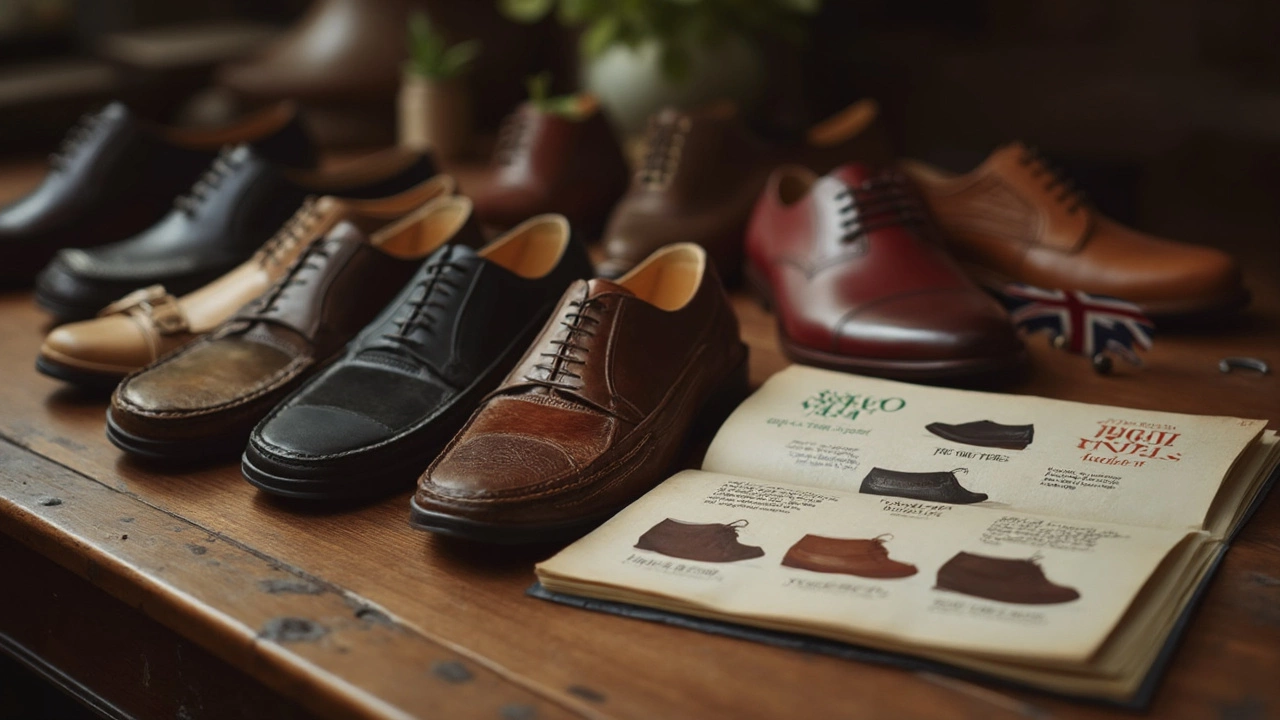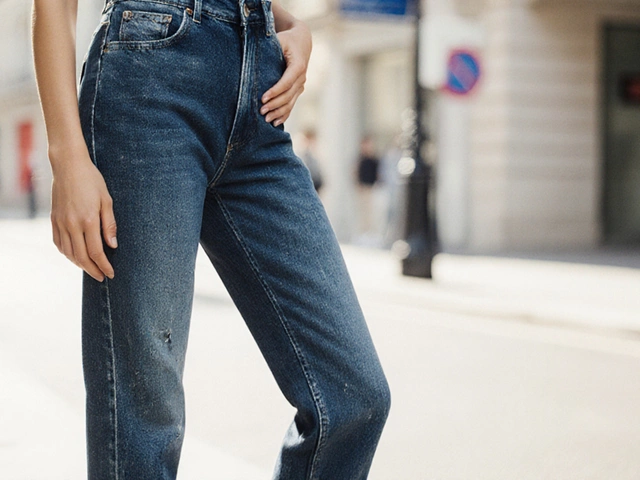Do Clarks Use Pig Leather in Their Shoes?

- Cleo Fairchild
- 3 May 2025
- 0 Comments
Ever stood in a Clarks store, staring at a slick pair of loafers, and wondered what they're really made of? You're not alone. Clarks is a big name in leather shoes, but when it comes to the actual animal hides used, stuff gets confusing fast—especially if you're wary about pig leather for religious or personal reasons.
Here's the straight-up deal: Clarks has used all sorts of leather over the years, including cow, sheep, goat, and yes—sometimes pigskin. The trouble is, they don’t always plaster the exact animal type on the label. So, just because it says "genuine leather," that doesn't mean it's pig-free.
If this is a big deal for you, don’t skip the small print—better yet, ask the staff. Most Clarks shop assistants get this question more often than you'd think. Also, check the shoe lining, since that's where pig leather pops up the most in affordable casual shoes, not just by Clarks but pretty much everywhere.
- What Leather Does Clarks Actually Use?
- Why Pig Leather Matters to Some People
- How to Spot Pig Leather in Shoes
- Tips for Buying Clarks if You Want to Avoid Pig Leather
What Leather Does Clarks Actually Use?
If you peek under the hood (or, well, the lining) of your average pair of Clarks, you'll find a whole mix of leather types. The company uses different animal hides depending on the style and price point—so it’s definitely not a one-size-fits-all answer.
Here's the biggest thing: Clarks has never claimed to be pig leather-free. In fact, according to their own FAQs and past customer service emails, some shoes—especially the more affordable lines—do use pig leather mostly for inner linings. The classic uppers for their popular Desert Boot? Those are usually made of cow leather or suede, but you can’t just assume every style is pig-free.
Besides pig and cow leather, Clarks also uses goat and sheep leather for a soft feel or a special finish. They often label the material as just "leather," which covers any animal, but rarely specify more unless you really dig for details.
- Premium leather shoes: Mostly cowhide or full-grain leather.
- Fashion/casual lines: More likely to use pig leather, especially in linings.
- Special editions: Sometimes goat or sheepskin for texture or comfort.
Check out this quick breakdown:
| Shoe Type | Common Outer Material | Common Lining Material |
|---|---|---|
| Classic Desert Boot | Cow suede or leather | Pigskin or textile |
| School Shoes | Cow leather | Pigskin or synthetic |
| Sandals & Flats | Cowhide or sheep | Goat, pig, or synthetic |
Bottom line? If the animal source matters to you, don’t go by looks alone—check those tags or ask a salesperson to get the real details about the leather shoes you’re picking up.
Why Pig Leather Matters to Some People
The use of pig leather in shoes is more than just a random detail for lots of shoppers, especially if you’re picking out something from Clarks. For some, pig leather clashes with cultural beliefs or dietary laws. Muslims, Jews, and some vegans or vegetarians will avoid pig products at all costs—shoes included. Halal and kosher guidelines, for example, specifically prohibit pork in any form, not just food. So, having pigskin in your loafers or sandals is out of the question.
One 2022 Pew Research survey found that over 70% of Muslim respondents in the US would return products discovered to contain pig-derived materials—even if they were a gift or on sale. That’s a big deal, and brands know it. Clarks and other shoe makers have started answering more questions about where their leathers come from, but it’s still pretty common to get vague answers or just see “genuine leather” on the tag.
This isn’t just about religion. Some people have strong ethical views or allergies when it comes to animal-based products. A few find the idea of pigskin unhygienic or just off-putting based on how it looks—it sometimes has visible hair follicle dots that make people squeamish.
"People overlook how personal buying shoes can be," says Dr. Rania Al-Fayed, cultural studies expert at Leeds University. "Material choices are about culture, habit, and a sense of belonging. Pig leather especially causes more questions than other types."
Spotting pig leather can be tough, so having clear info is a must for these shoppers. Transparency from brands like Clarks helps customers stay true to their values, and it actually builds trust between the brand and people hunting for the right shoe.

How to Spot Pig Leather in Shoes
Spotting pig leather in a pair of new Clarks or any leather shoes might save you from making a choice you regret. Pigskin has a couple of dead giveaways compared to cowhide or goat leather, especially on the inner lining of shoes. Here’s how you can tell the difference:
- Look for tiny pinholes in clusters of three. Pigskin has visible hair follicles that show as little dots, usually grouped in sets of three, scattered all over the leather. Run your fingernail gently over the surface – you might feel them, too.
- Texture isn’t super smooth. Compared to calf or goat leather, pigskin feels a bit rough or suede-like. The grain is more open and obvious.
- Often used on lining, not the outside. Brands use pigskin mostly on the shoe’s inside because it’s softer and cheaper. Flip the shoe over and look at the lining by the heel or the tongue. See those little dots again? That’s a hint.
- Color can vary. Pig leather lining is usually beige, light tan, or sometimes even pinkish. If the color looks oddly light compared to the shoe’s outside, take a closer look for those signature follicle dots.
- Labels are rarely clear. Shoe tags might only say “genuine leather.” If you’re unsure, ask a sales assistant or reach out to Clarks customer support with the product number.
To make things even clearer, here’s a handy table comparing pigskin and cowhide—just so you know exactly what you’re looking for:
| Leather Type | Visible Follicles | Texture | Common Use in Shoes |
|---|---|---|---|
| Pigskin | Clusters of three pinholes | Soft, open grain, suede-like | Lining, sometimes upper in budget shoes |
| Cowhide | No visible clusters | Smoother, tighter grain | Main upper material, soles |
If you’re ever in doubt about what kind of leather shoes you’re buying, snapping a close-up photo of the lining and asking an expert online can also help. And really, once you’ve seen pig leather close up, the ‘three dot’ pattern is tough to forget.
Tips for Buying Clarks if You Want to Avoid Pig Leather
If you're determined to keep your Clarks shoes free of pig leather, you have to go beyond just checking the tag. Most shoe labels just say “leather,” not what kind. That leaves you guessing—or worse, buying the wrong thing. Let’s make this less of a gamble.
- Ask Before You Buy: Seriously, don’t be shy. Whether you’re in-store or chatting with online support, ask straight-up: "Does this model contain pigskin?" Clarks’ customer service can sometimes look up a specific style number for you.
- Look at the Lining: The pigskin lining has a tell: little dots or hair follicles that run in tight clusters of three. If you spot small, pinprick-size pores grouped in triangles—bingo, that’s pig leather.
- Buy from Clarks’ Premium Lines: Premium Clarks shoes and boots (like their top-end Desert Boots) more often use cow or sheep leather throughout. The cheaper everyday or casual shoes are where pigskin is most common—especially in the lining.
- Order Direct: The closer you can get to Clarks’ main site or stores, the better the info you’ll get. Big-box retailers and resale marketplaces might have less clue about the original materials.
- Look for Country of Manufacture: Shoes made in certain countries (like Vietnam, China, or Bangladesh) are much more likely to use pigskin. UK- or European-made Clarks often specify the material, and pig leather is less common.
Here’s a quick comparison of Clarks’ core shoe lines, so you know where to dig deeper:
| Clarks Shoe Line | Lining Material | Chance of Pig Leather |
|---|---|---|
| Originals (UK) | Mostly Cow/Sheep | Low |
| Casual/Economy | Pigskin possible | High |
| Formal/Premium | Usually Cow | Low/Medium |
If avoiding pig leather is really crucial, bring a flashlight or use your phone’s camera light to check inside the shoe. If you’re buying online, ask for extra close-up photos of the inside lining. The staff at Clarks stores know it’s a common concern—don’t hesitate to push for clear answers. Sticking to these tips makes it a lot less likely you’ll walk out with the wrong kind of leather.


